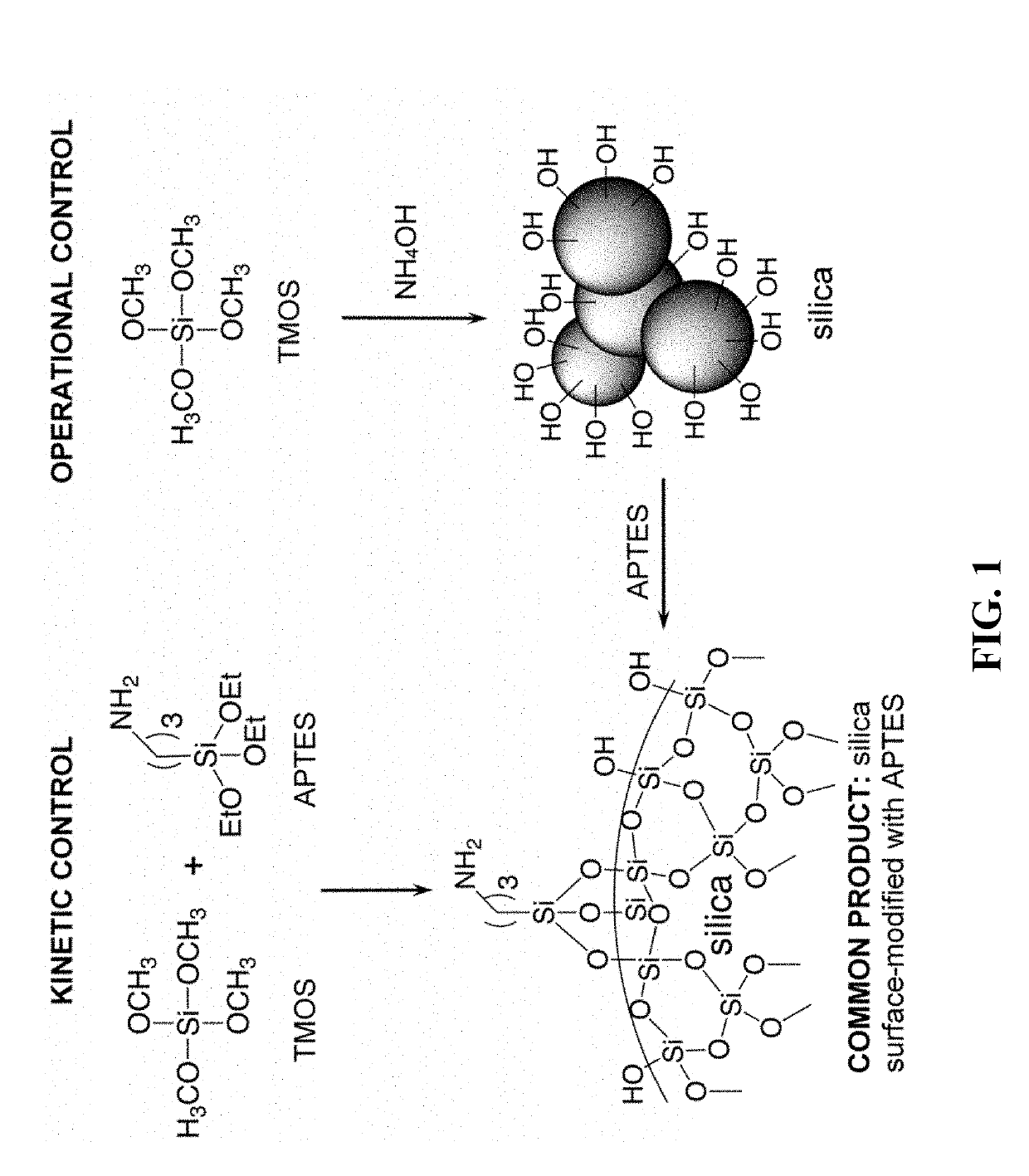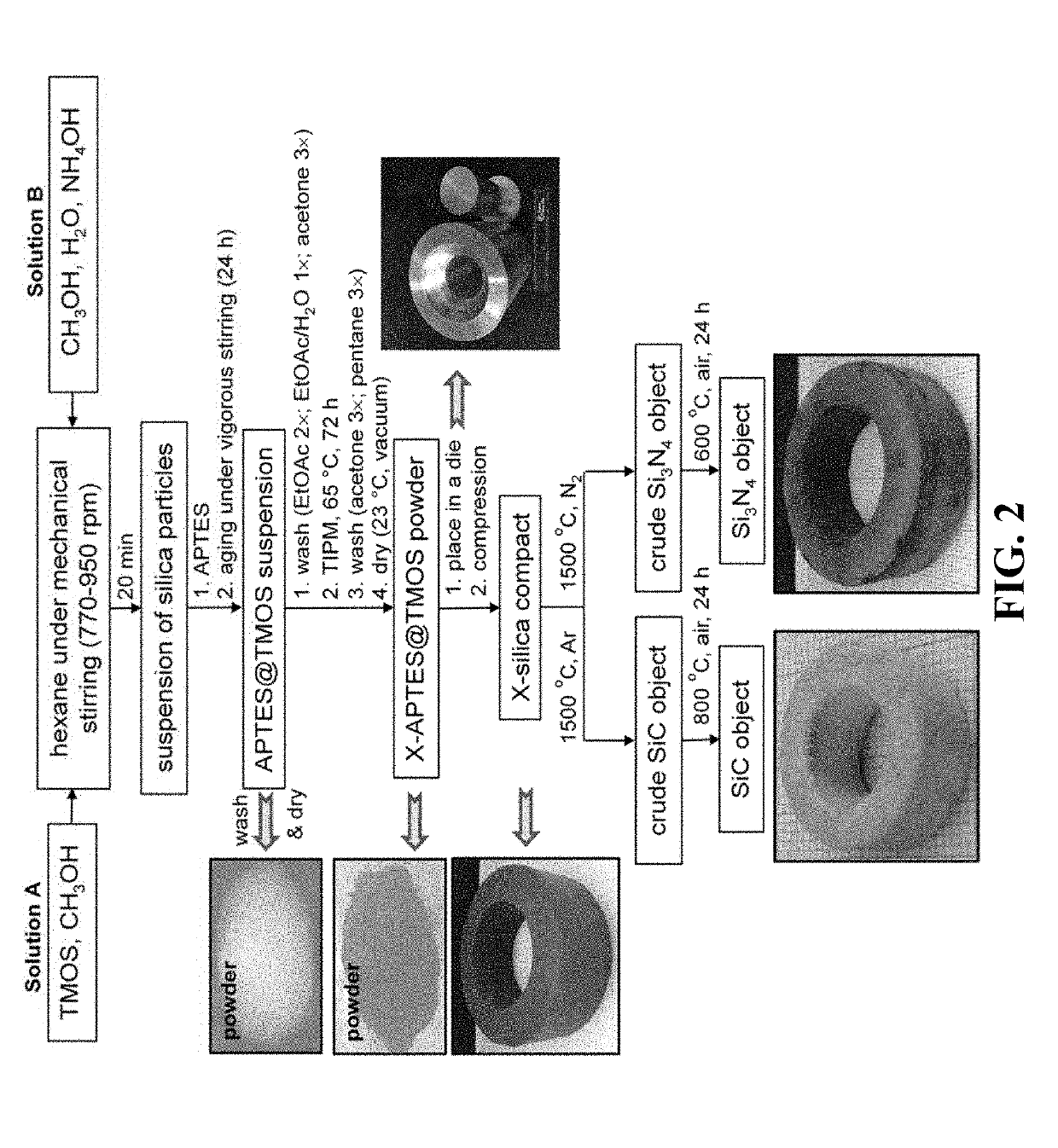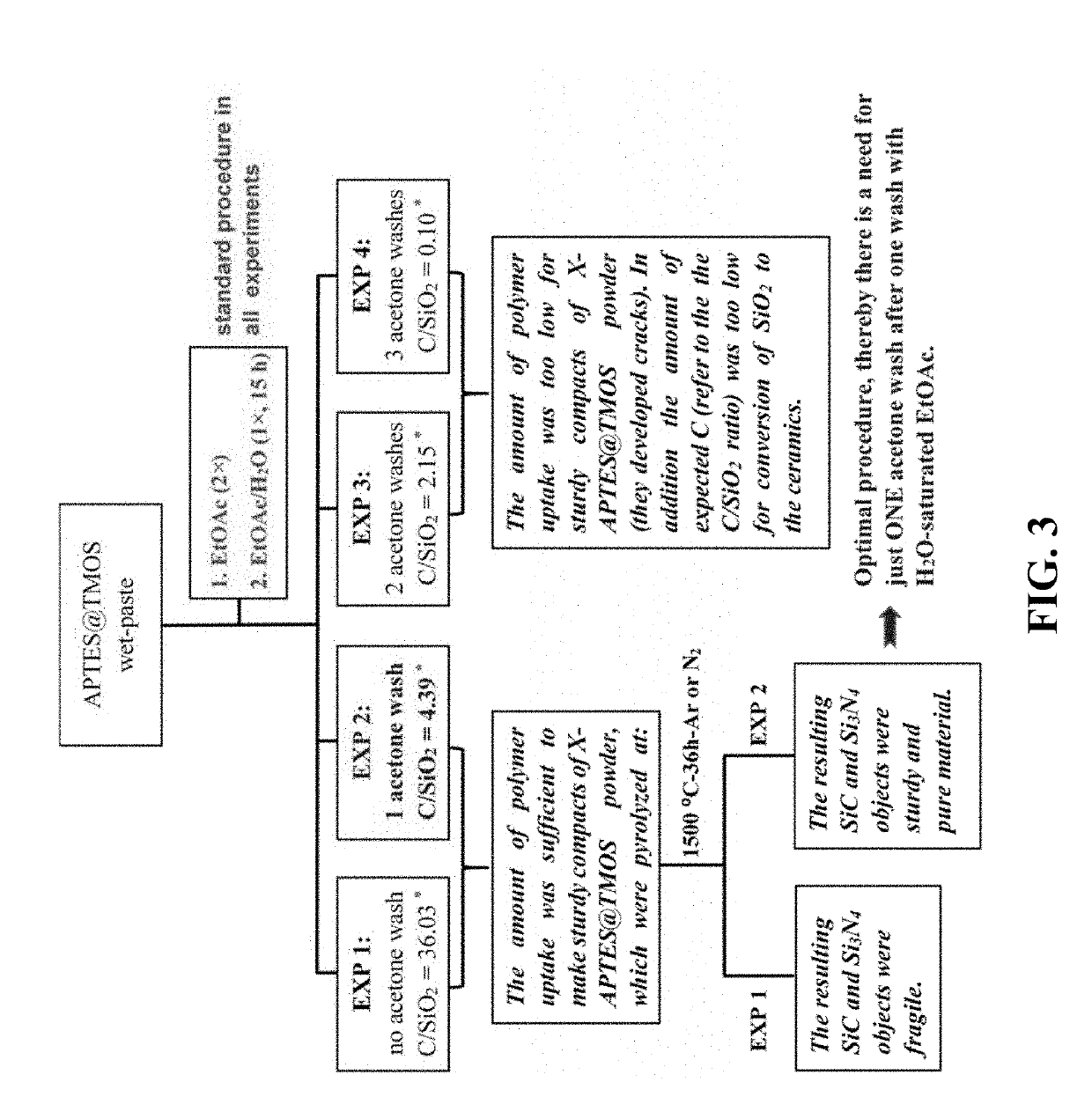Novel highly porous ceramic and metal aerogels from xerogel powder precursors, and methods for their production and use
a technology of xerogel powder and precursors, which is applied in the field of new high-porous ceramic and metal aerogel monolithic objects, can solve the problems of affecting the production efficiency of xerogel powder, so as to reduce the amount of carbon precursors, accelerate processing, and minimize losses
- Summary
- Abstract
- Description
- Claims
- Application Information
AI Technical Summary
Benefits of technology
Problems solved by technology
Method used
Image
Examples
example 1
[0075]Fabrication of shaped SiC and Si3N4 porous objects. In order to facilitate latching of polyurea onto the surface of silica, the long-standing strategy has been to provide silica with amines (e.g., see: Katti, A., et al., Chem. Mater., 18:285-296 (2006); Meador, M. A. B., et al., Chem. Mater., 19:2247-2260 (2007)). Based on the reported higher reactivity of (a) tetra-versus tri-alkoxysilanes (e.g., see: Wising, N., et al., Angew. Chem., Int. Ed., 37:22-45 (1998)), and of (b) methoxy versus the ethoxysilanes (e.g., see: Wising, N., et al., Chem. Mater., 11:451-457 (1999)), it has been suggested that co-gelation of tetramethoxysilane (TMOS) with 3-aminopropyl triethoxysilane (APTES), leads to a TMOS-derived 3D network of silica nanoparticles, which are surface-modified later with slower-reacting APTES (FIG. 1) (see: Leventis, N., Acc. Chem. Res., 40:874-884 (2007)). Overall, it is noted that hydrolysis and polycondensation of TMOS is catalyzed by the high concentration of base (A...
example 2
[0078]Chemical characterization along synthesis. Latching of APTES on TMOS-derived silica particles was confirmed with solid-state CPMAS 29Si NMR. The spectrum of APTES@TMOS (FIG. 8) shows two features: (a) a peak at −66 ppm with a shoulder at −59 ppm, which were assigned to the T3 and T2 silica atoms from APTES, and (b) two peaks at −110 ppm and at −101 ppm with a shoulder at −92 ppm, which were assigned respectively to the Q4, Q3 and Q2 silicon atoms from TMOS. The presence of Q3 and T2 silicon atoms points to dangling Si-OH groups, thereby APTES@TMOS offers two kinds of possible sites for reaction with the isocyanate: —NH2 and —OH. FIG. 8 also includes the 29Si NMR spectrum of a TMOS-co-APTES aerogel prepared with the same APTES:TMOS mol ratio (0.2) as APTES@TMOS. The two spectra were in all aspects identical, including both the integrated Q:T ratio of 1.635±0.015, as well as the T3:T2 and the Q4:Q3:Q2 ratios, which may lead to the conclusion that: (a) preventing gelation by vigo...
example 3
[0085]Materials Characterization. That focused on: (a) the evolution of the micromorphology and the pore structure along the operations of FIG. 2, and (b) application-related properties such as oxidation resistance at high temperatures, thermal conductivity and mechanical strength.
[0086]Structural evolution along processing: The evolution of the micromorphology along processing is illustrated in FIGS. 14 and 15. Relevant material characterization data are summarized in Table 1. For setting a reference point relative to previous literature both FIG. 14 and Table 1 include corresponding data for TMOS-co-APTES and X-TMOS-co-APTES aerogel monoliths. FIGS. 14C and 14D concern powders and include insets showing typical grains of the respective materials, irregular shaped, about 50 μm in size; the main subject of FIGS. 14C and 14D is the interior of those grains, in high magnification.
TABLE 1Materials characterization data along processingBETAverageLinearSkeletalPorosity,Specific pore volu...
PUM
| Property | Measurement | Unit |
|---|---|---|
| time | aaaaa | aaaaa |
| time | aaaaa | aaaaa |
| temperature | aaaaa | aaaaa |
Abstract
Description
Claims
Application Information
 Login to View More
Login to View More - R&D
- Intellectual Property
- Life Sciences
- Materials
- Tech Scout
- Unparalleled Data Quality
- Higher Quality Content
- 60% Fewer Hallucinations
Browse by: Latest US Patents, China's latest patents, Technical Efficacy Thesaurus, Application Domain, Technology Topic, Popular Technical Reports.
© 2025 PatSnap. All rights reserved.Legal|Privacy policy|Modern Slavery Act Transparency Statement|Sitemap|About US| Contact US: help@patsnap.com



